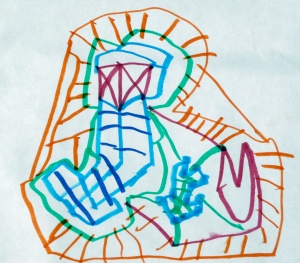 Once, when my older son was about five, we were talking one morning about how much he appreciated his school. I wistfully said that perhaps one day he would have kids and that they might go to the same school. Uncannily zoning in on the underlying situation of attachment, loss and the cycles of life, my kid paused, considering something… and then he looked at me without a trace of maudlin pathos and asked, “Dad, before you die could you write down the directions to my school?”
Once, when my older son was about five, we were talking one morning about how much he appreciated his school. I wistfully said that perhaps one day he would have kids and that they might go to the same school. Uncannily zoning in on the underlying situation of attachment, loss and the cycles of life, my kid paused, considering something… and then he looked at me without a trace of maudlin pathos and asked, “Dad, before you die could you write down the directions to my school?”
There are many times in life when we would appreciate having a map and an instructions manual. I once had a client, who had been severely abused as a child, who had the long-standing fantasy as a child that there could be a “book of rules” that would explain to him why life had been so cruel to him, and what he was supposed to do.
And while I have no maps, I have an attitude that the map is in our bones and comes to life between us, in our relationships.
An exercise that I found useful from time to time with my children, particularly when they were in the three to six range and struggled to verbally express feelings, was to invite them to draw “feelings maps.” Scribbles and patches of color would be, as they explained to me, anger or fear (for example, I might say, “it sounds like you are confused, could you draw your confusion?” I might add in, “now, could you draw feeling happy?” (or “safe” or “feeling good about yourself”– whatever seemed relevant). Then the key part was inviting them to draw the road, or map, between one feeling state and another. This was empowering because it gave representation to feelings that were hard for them to understand or contain, and it helped their brains see a way to better feelings. If right action leads to right thinking (and right thinking leads to right action), we can intervene anywhere in the circle. I do think that this sort of emotional mapping helps the brain follow its own image-making. It doesn’t seem likely to do much harm.
So, let’s dedicate today to helping all our kids understand their feelings and make their way toward good feelings that last, and at the same time let’s trust, and support them to learn, that they can find their own way, particularly when we care enough to watch them do it.
Namaste, Bruce



{ 2 comments… read them below or add one }
I think this is a good one for me to try. Thanks so much!
Stephanie.
Great site…keep up the good work.